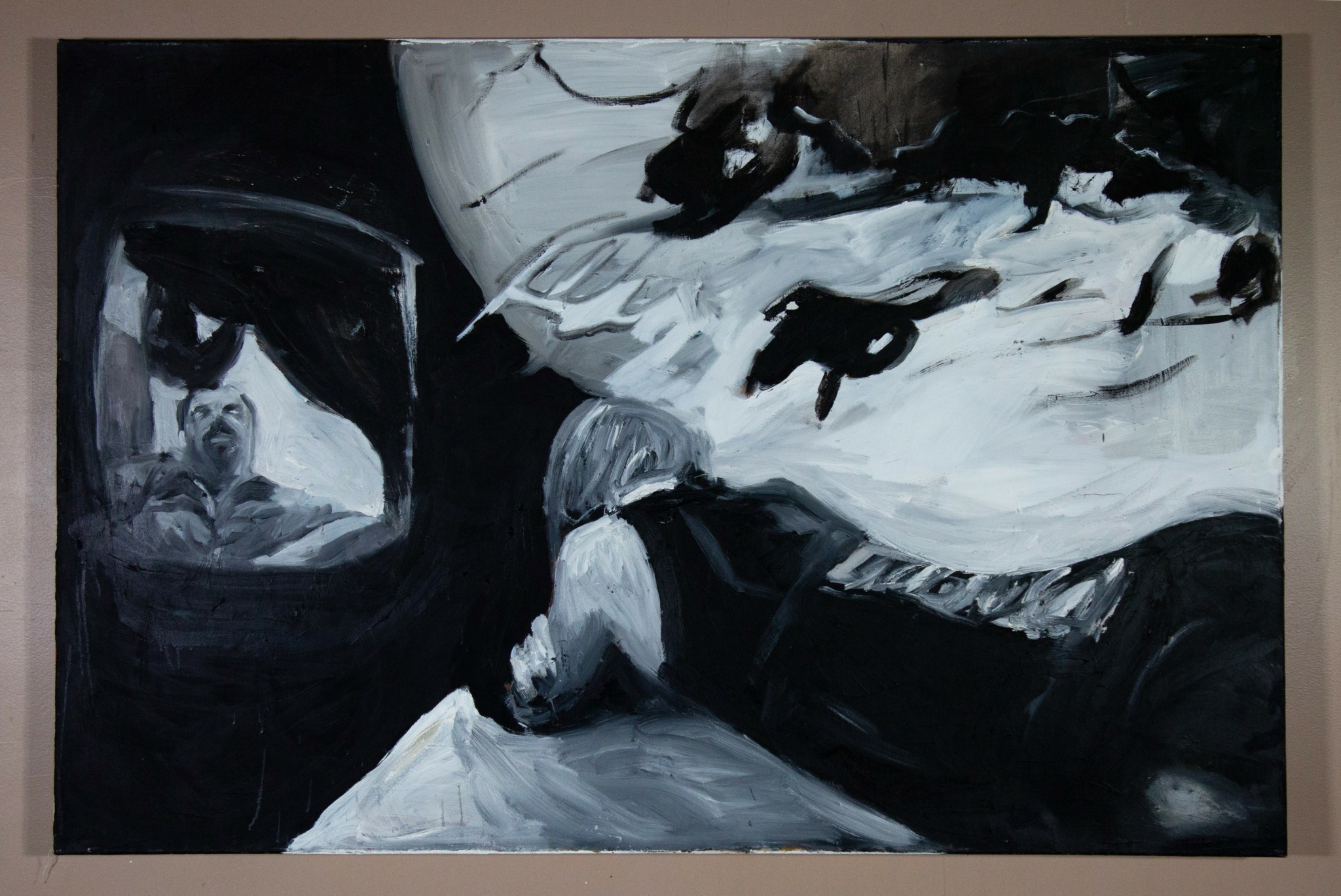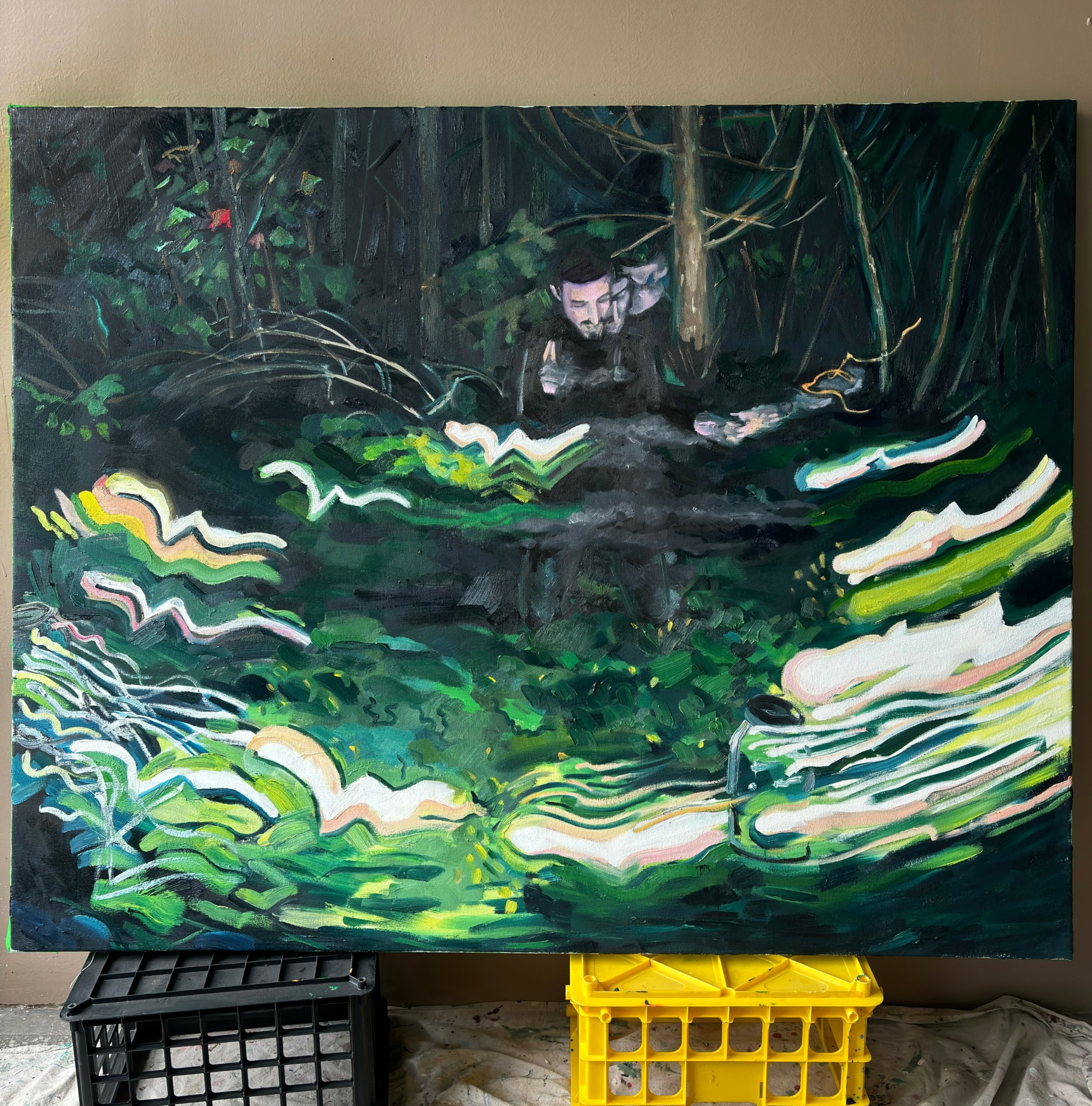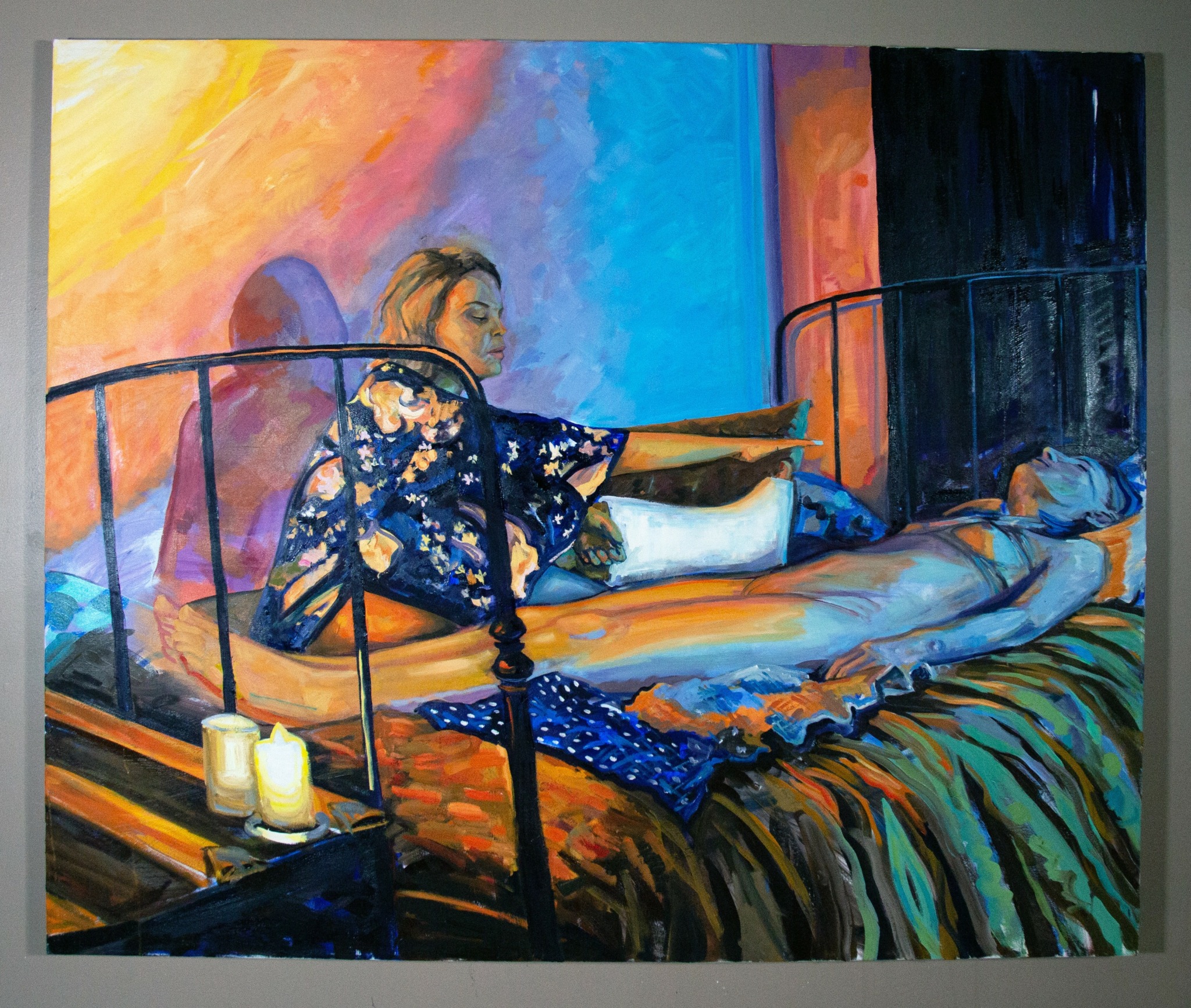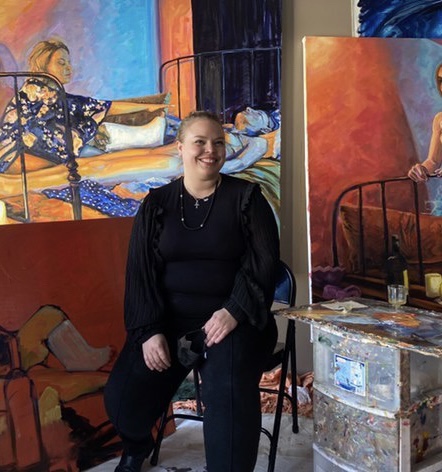We were lucky to catch up with Kara Eckler recently and have shared our conversation below.
Kara , thanks for taking the time to share your stories with us today We’d love to hear about when you first realized that you wanted to pursue a creative path professionally.
I received my undergraduate degree in art, with a focus on painting when I was living in the United States. I fell in love with painting at university and knew I would probably always want to keep painting, but I never really saw a future for myself as a professional artist and I didn’t have the confidence to try to exhibit my work. My lover at the time was a writer and he posted some photos of my paintings on his author’s website, and a German curator who worked for the Institut Valencia d’Art Modern got in touch and wanted to give me a solo museum show! I had only exhibited at my university up until that point, so this was pretty mind-blowing. They flew me out to Spain and we were supposed to discuss my show that was supposed to tour Europe and have a monograph published with it–the works! The museum was huge, beautiful, and grand, and the prospect would have been life-changing. The night after I arrived the director, curator, myself, and some artists were at a gala dinner at the museum celebrating the opening of their exhibition. It was announced that the Spanish government had just fallen, and thus all plans for the museum show were off, since museum directors’ positions are political in Spain. My dreams that were so suddenly elevated were just as suddenly dashed. After a period of depression, back in Canada, I slowly started to come to the realization that I should still endeavour to exhibit my work and try to have some sort of artistic career. Twenty years later, I’m still struggling to do so, to be honest, but I’m so grateful to that curator who believed in my work and wanted to lift me up at that early stage in my career. It gave me the confidence to get out there.


Kara , before we move on to more of these sorts of questions, can you take some time to bring our readers up to speed on you and what you do?
I’m an oil painter who has been creating large scale figurative paintings around themes of mythology, the self, sexuality, and spirituality for over two decades. I went to University to study English Literature and to become a writer, but I took a drawing class freshman year and fell in love with art. Growing up my mother was always artistic, and she wanted to become an artist herself. I had art books around me and I had some exposure to painting through her, though I never really painted until my first painting class my sophomore year. One of my painting professors, Mark Greenwold, was very influential to me in helping me to dig deep into my psyche, to be fearless as an artist and push boundaries. I have an unconventional career in another field that supports me financially, so I can paint what I want without making compromises. I’m proud of that, even if it has been at the cost of sales and success. Painting large scale, often bizarre, erotic oil paintings doesn’t exactly equate to lots of sales, but it is what I’m passionate about and what I do best. On the other hand, I’ve been working on getting better at painting some small works and works on paper as I believe anyone should be able to collect art, so I’ve been doing a bit of that as a side project. I hope to inspire others to be courageous and also to dig deep into their own psyche and see what is in there. Everyone has a story worth telling. Our human experiences are precious and brief, and in my paintings I hope to capture some of the magic of the essence of the moments we have together.


Can you share a story from your journey that illustrates your resilience?
Before I had much connection to any art community, I was easily discouraged and I took everything too personally. Rejections are frequent for all artists, no matter the quality of their work. When I was first exhibiting in Toronto, I tried pretty hard to find gallery representation there and was met with silence or simple rejection. I’ve also been rejected multiple times from an MFA program I applied to in Montreal. When I started to meet a lot of artists after getting a shared studio in a building in the Montreal downtown core, I started to understand that rejection is an inherent part of the life of an artist that I had to get used to. It happens to everyone. It wasn’t a reflection on the quality of my work. There are many factors at play. I started to host some shows of my own, to collaborate with other artists, to open my studio for Nuit Blanche and for other events and to connect with collectors and art lovers that way. This has been very rewarding in its own way, if unconventional. I’m still in need of my resilience as trying to be a full-time artist if you’re not making very decorative or commercial work, is like trying to be a rock star.


What can society do to ensure an environment that’s helpful to artists and creatives?
I think society would do well to remember how important artists are to their culture, history, and overall how much they add to the understanding, richness, and texture of human life. If we study a culture, one of the first things we look at is what kind of art they made. If we go to a city, one of the main activities people do is visit a museum. And yet artists are derided for not choosing a more profitable or sensible career. I think more people should collect original art, and educate themselves a bit more about the arts. More people should slow down, get off the internet, and look at art in person, and not be so shy about visiting galleries. Gallerists aren’t there to pressure you to buy, most that I know are happy when people come in, will explain the art if needed, or at worst they just don’t mind your presence. You can have a nice Saturday just visiting a few galleries around the city, it’s a free activity and a great way to explore various neighbourhoods, and most gallery shows change every few weeks, so there’s always something new to see. If they decorate their home at all, the average person decorates it with a bad print from IKEA. Not everyone can afford to buy a big oil painting, to be sure, but there are a lot of emerging artists, or even art students, selling small works for $100, more or less. With the amount of money we waste on things that are mass produced and then discarded, we could be helping a struggling artist to survive and giving them the morale to keep creating.
Contact Info:
- Website: https://www.karaeckler.com
- Instagram: https://www.instagram.com/kara.eckler
- Facebook: https://www.facebook.com/share/1aGYEMazHY/?mibextid=wwXIfr




